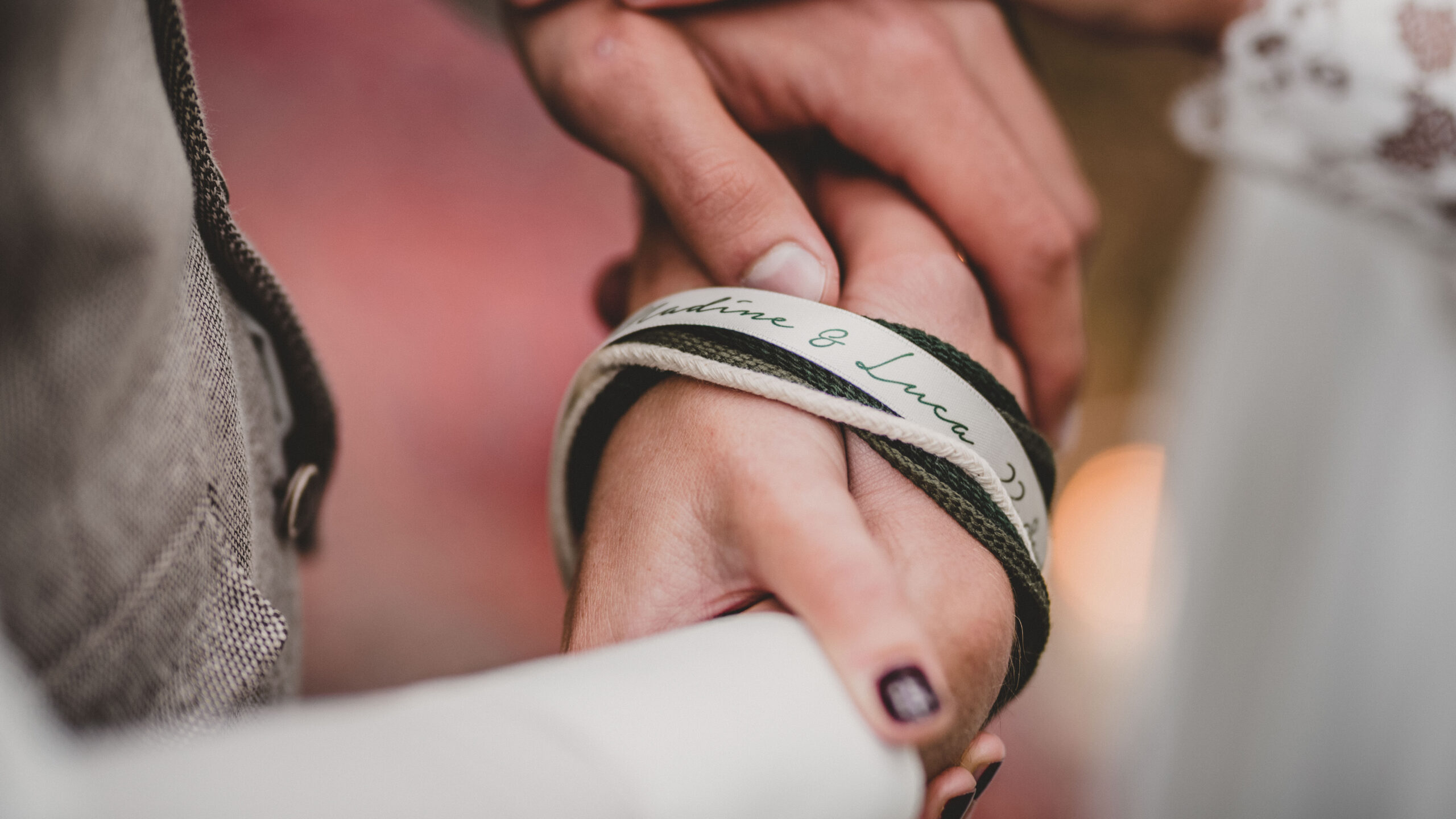
5 Minute Read
Handfasting is a unity ritual that is embedded in ancient Celtic roots in which the hands are tied together to symbolise the binding of two lives. It is becoming more popular in modern wedding ceremonies due to its symbolic link to ‘tying the knot’. There are multiple ways that your hands can be tied and although it’s traditionally your celebrant or officiant who ties the cords, many people now are involving family members or friends which is a lot of fun!
Traditionally, couples are supposed to stay ‘tied’ together until midnight on their wedding day, but this would make navigating your reception a little tricky! Most couples carefully take their cords off after the ceremony, while keeping the cord knot intact so they can have it as a keepsake.
Absolutely – I love a handfasting! We can include this as part of your wedding ceremony, but some people opt to have a stand-alone handfasting ceremony, or as part of a commitment ceremony, as part of a vow renewal ceremony or even to celebrate their engagement.
Traditionally, different colour cords or ribbons are used but some couples choose to use cords made of cloth from sentimental items of clothing. You can also add charms to the end of the cords, like horseshoes, seashells, or beads. For a stunning look that is organic and also deeply symbolic, you could think about having natural garland, vines or flowers woven together by your florist to serve as your handfasting cord. We can either make your own cords or I can give you recommendations of online companies who specialise in making cords for handfasting ceremonies. Most couples have three cords woven together to make your whole cord, but there is no set number. It’s worth remembering however, that your cords need to be around one metre in length to be long enough for wrapping around your hands.
You can choose any colour you like! Some couples match their cord colours to the colour theme of their wedding, some couples choose colours related to their nationality, religion or cultural beliefs. Traditionally the colours (and their shades) are synonymous with the meanings as below:
So, during your ceremony, I usually start by explaining the ritual and what it means to you. I include the notion of you binding their lives together and the union of your hopes and desires. I then invite you to join hands symbolising your free will to enter into the marriage. I then read a poem or a series of vows as I wrap the cords round your hands. I then make a statement about the completion of the binding and the commitment it symbolises. After your hands are bound or your knot is tied, you can proceed to exchange additional vows, or you can use the handfasting as your vows and move directly onto the ring exchange.
Want to know more or fancy a chat? Contact me here.